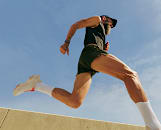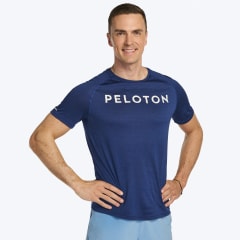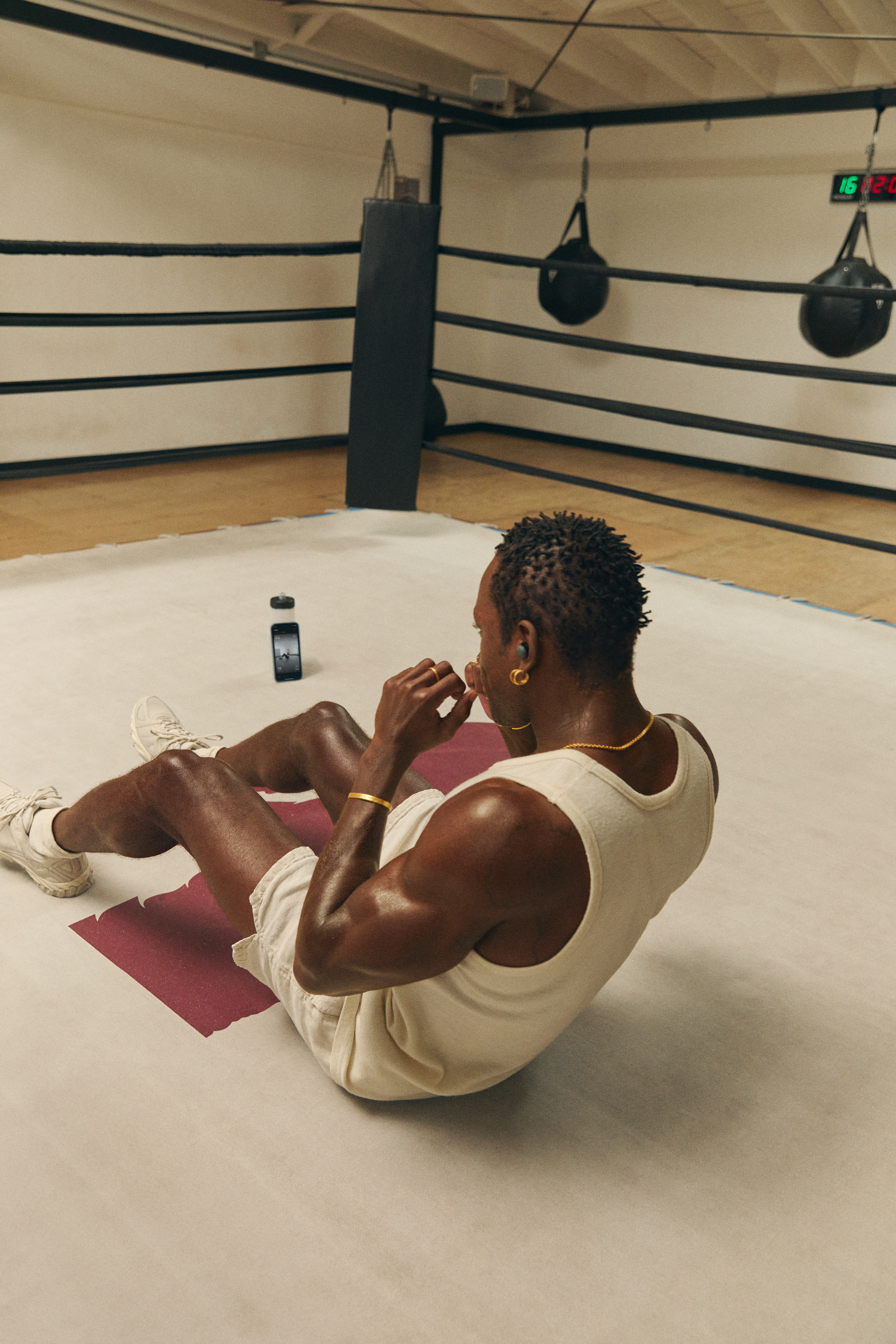
All the Ways You Can Strength Train Without Lifting Weights
Lifting weights is great for building strength—but it's not the only way.
By Danielle Zickl•
Do You Need to Lift Weights to Get Stronger?
Reasons Why You’d Want to Strength Train Without Weights
Types of Workouts for Building Strength Without Weights
Bodyweight Exercises That Build Strength Without Weights
The Takeaway
When you think of ways to get stronger, intense exercises like heavy barbell squats and deadlifts probably come to mind. After all, the most jacked person in your gym is always lifting weights, right?
Discover more ways to reach your goals with Peloton
Well, we have good news: You don’t need dumbbells, kettlebells, barbells, or any other piece of fitness equipment to build strength. Your own body weight is more than enough. “Building strength is about working smarter, not just harder, and bodyweight training proves you don’t always need equipment to feel stronger and more capable,” says Peloton instructor Ben Alldis.
Ready to learn how to go about strength training without lifting weights? We chatted with two experts for tips, and have a list of some of the best exercises you can do from the comfort of your own home—or anywhere else you’re hoping to strength train without weights.
Do You Need to Lift Weights to Get Stronger?
“Not necessarily,” Ben says. “Strength comes in many forms and can be built in different ways. Bodyweight exercises, resistance bands, and functional movements can all be just as effective, depending on your goals.”
Tom Holland, a certified strength and conditioning specialist and exercise physiologist, agrees. Bodyweight training can be a simple and effective alternative to lifting weights, he says. Studies show, for example, that a 12-week program of bodyweight exercises can significantly increase muscle strength and size in untrained adults, and that eight weeks of push-ups can result in similar gains as bench presses done with 40 percent of a person’s one-rep max.
Bodyweight exercises can ultimately provide the stimulus needed to trigger the neural and muscular adaptations that build strength even without adding extra resistance via free weights or machines. “When we engage in resistance training, we teach our bodies to recruit more muscle fibers and do so more quickly,” Holland explains. “At the same time, we increase the size of our muscle fibers, a process called muscular hypertrophy.” That’s how you become physically stronger and also gain muscle mass. “Both of these changes occur when we overload our musculoskeletal system during strength training,” he says.
You can induce those adaptations without grabbing weights, but there’s a caveat: Eventually, bodyweight exercises may not be enough to challenge you anymore.

Peloton App
Access thousands of classes with no equipment needed.
The key word is “overload.” You need to challenge your body’s current abilities to prompt your muscles to adapt and become stronger as a result. Exercise places stress on the musculoskeletal system, creating tiny microtears in the muscle fibers, which respond by repairing and rebuilding back stronger, Holland says. This is the basis behind the strength training principle of progressive overload, the practice of gradually increasing the demand placed on the body over time. As long as you continue to increase the intensity, you should continue to see muscle- and strength-building results.
If you're looking to use progressive overload with a goal of building serious strength, weights are an incredible tool to get you there, Ben says—but you can also keep challenging yourself without adding weights.
If bodyweight exercises start to become too easy, you can manipulate certain factors, such as rep count and rep speed, to make your workouts harder. “I love incorporating elements like tempo changes, isometric holds, and explosive movements to add variety and increase the challenge,” Ben says. “For example, slowing down a squat or holding a plank for an extra few seconds can completely change how your muscles engage.”
Beyond bodyweight exercises, you can use other non-weight workout tools like resistance bands, suspension trainers, steps, benches, sliders, and more to add variety and difficulty to your workout to keep challenging your muscles and help you build strength without lifting weights.
Reasons Why You’d Want to Strength Train Without Weights
While lifting weights can help you reach your strength goals, Ben and Holland agree that there are plenty of reasons you might want to skip the dumbbells.
“Maybe you don’t have access to equipment, are working with an injury that requires a more controlled approach, or simply prefer the convenience of bodyweight workouts,” Ben says. “Some people might focus on functional training or enjoy activities like yoga or Pilates, which can build strength without weights.”
A few other reasons you might pass on lifting weights include:
You don’t have access to weights, like dumbbells or kettlebells.
You don’t have the budget to join a gym.
You have an injury that might be exacerbated by lifting weights.
You prefer the convenience of bodyweight workouts.
You’re new to exercise or coming back to it after a break.
Types of Workouts for Building Strength Without Weights
Bodyweight Exercises
Bodyweight exercises, sometimes called calisthenics, are probably what comes to mind when you think about strength training without weights. “Think: push-ups, planks, squats, and lunges—these movements hit multiple muscle groups and can be scaled to any fitness level,” Ben says. These types of moves are generally great for beginners because they’re functional, require no equipment, can be performed anywhere at any time, and they can be easily modified depending on your fitness level, Holland says.
Try a Bodyweight Strength Class on the Peloton App
Yoga
“Yoga is an incredible way to build strength,” Ben says. In fact, a 2015 controlled clinical trial published in Evidence-Based Complementary and Alternative Medicine found that participants who practiced Hatha yoga for 12 weeks experienced significant improvements in muscular strength.
Holding poses for an extended period of time challenges your muscular endurance, while flowing through sequences adds a dynamic element, Ben continues. “It combines controlled movements, bodyweight resistance, and stability work—all while improving mobility and balance,” he says. Not to mention, “yoga teaches you to connect strength with control, which can benefit every aspect of your fitness routine,” Ben adds.
Try a Yoga Class on the Peloton App
Pilates
Pilates is also a great choice for building strength because it focuses on controlled movements, core engagement, and improving overall body alignment, Ben says.
“It’s not about heavy resistance—it’s about mastering the connection between your mind and muscles to create strength from the inside out,” he explains. “What I love about Pilates is how it builds functional strength that carries over into your everyday life and other workouts.” For instance, having a strong upper body, core, and lower body can help you carry heavy grocery bags into your house or pick up your pet or small child with ease.
Try a Pilates Class on the Peloton App
Barre
Barre classes focus on small, controlled movements that isolate specific muscle groups, which can be great for building strength in targeted areas, Ben says. “It’s all about high reps, isometric holds, and keeping tension in the muscles, which helps build endurance and improve muscle tone,” he says. “What I love about barre is how it combines elements of strength, balance, and flexibility all in one workout.”
Try a Barre Class on the Peloton App
Bodyweight Exercises That Build Strength Without Weights
There are so many ways to strength train without lifting weights, but these moves—many of which you’ll see in all the above types of workouts—are a great place to start (and keep coming back to). If you’re not interested in a DIY workout, consider trying one of the many bodyweight classes in the Peloton App.

1. Plank
Planks are great for building core strength and overall stability, Ben says. This move targets your shoulders, arms, and even your legs if you’re doing the move properly. Holland is also a fan of planks as a “comprehensive core exercise that works both the abdominals and muscles of the lower back at the same time,” he says.
Start in a tabletop position, on all fours, with your hands on the floor directly under your shoulders, fingers spread for stability.
Gently draw your belly button toward your spine to engage your core. Then, one at a time, extend your legs behind you to lift your knees off the floor and find high plank with your toes tucked and feet together.
Your body should form a straight line from your head to your heels. Squeeze your glutes, push into your palms, and think about drawing your shoulder blades back and down. Keep your neck in a neutral position by looking slightly ahead of your hands.
Hold this position for 20-60 seconds.
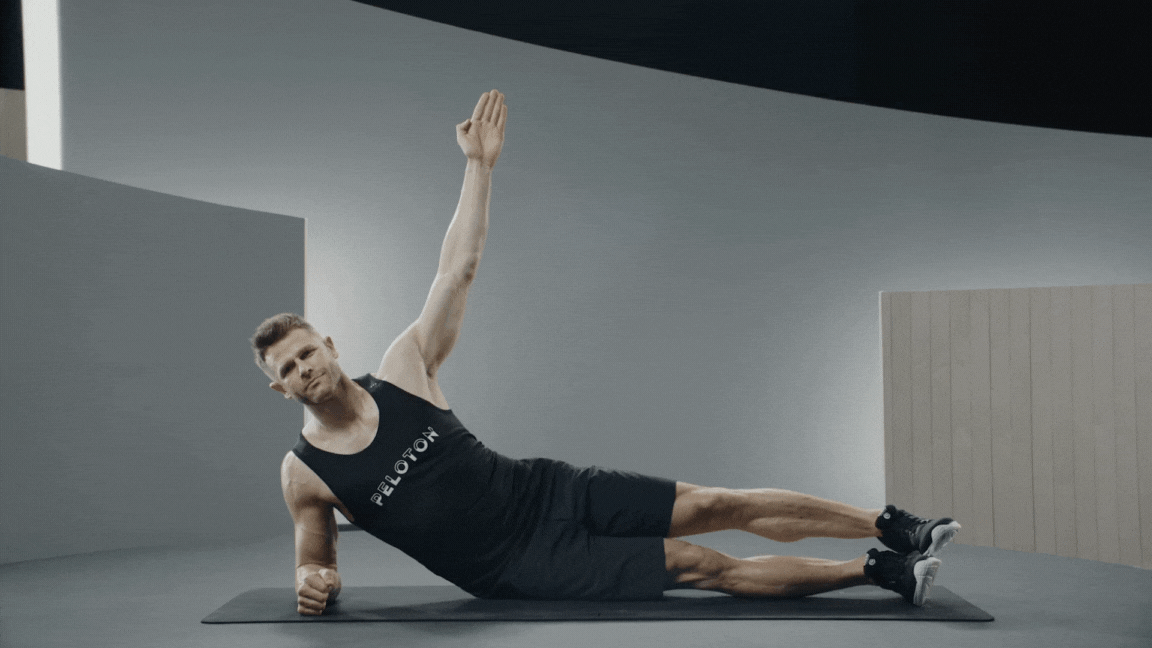
2. Side Plank
Plank variations, like side planks, target your core, shoulders, and glutes while also improving overall stability and balance, according to Ben.
Lie on one side with your elbow underneath your shoulder. Straighten your legs and stack your feet on top of each other.
Engage your core and lift your hips so your body forms a straight diagonal line from your head to heels. Avoid bending at the hips.
Hold this position for 20-60 seconds, then repeat on the other side.
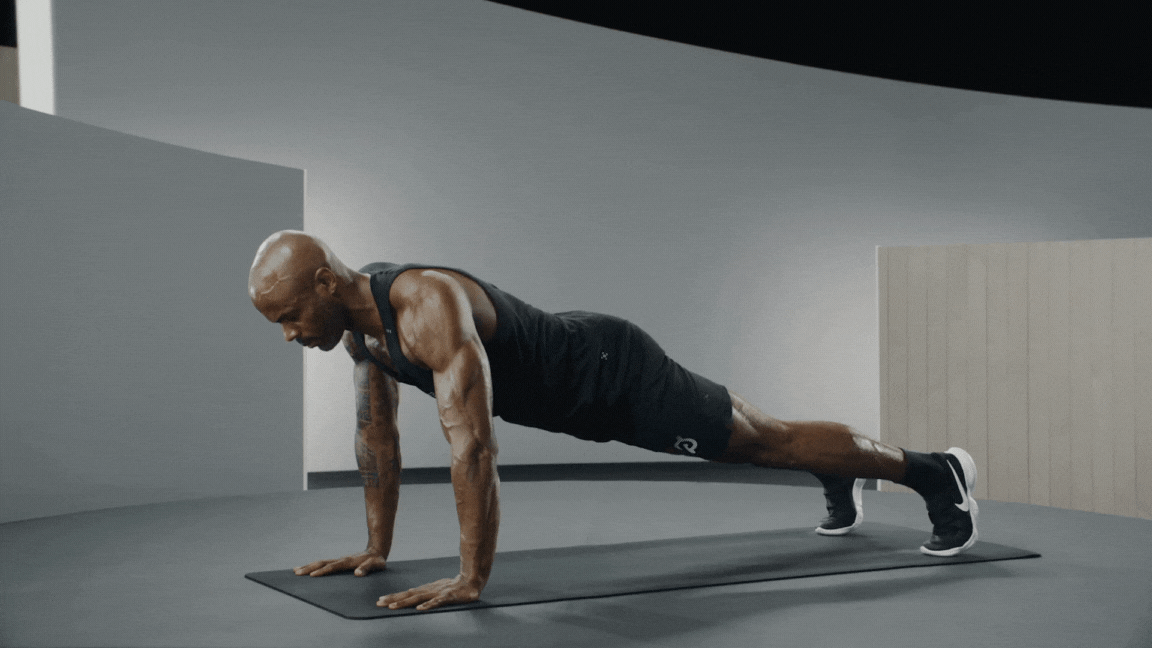
3. Push-Up
Push-ups are a classic strength exercise that builds muscle in your shoulders, biceps, triceps, and back muscles while also engaging your core, Ben says. Holland also recommends push-ups: “The push-up, a compound exercise that works multiple muscle groups, is extremely effective at building upper-body strength,” he says.
Start in a high plank position with your palms on the floor and directly underneath your shoulders and feet hip-width distance apart. Spread your fingers wide and press them into the floor. Engage your core, forming a straight line from head to heels.
With control, bend your elbows to lower your entire body toward the ground. Your elbows shouldn’t point directly to the sides or to the back, but somewhere in between, at about a 45-degree angle. Make sure your body moves together as one piece, with your hips and shoulders lowering simultaneously.
Lower as far as you can while keeping your body in one straight line.
Pause at the bottom. Then, press into your palms to straighten your arms, returning to the starting position.
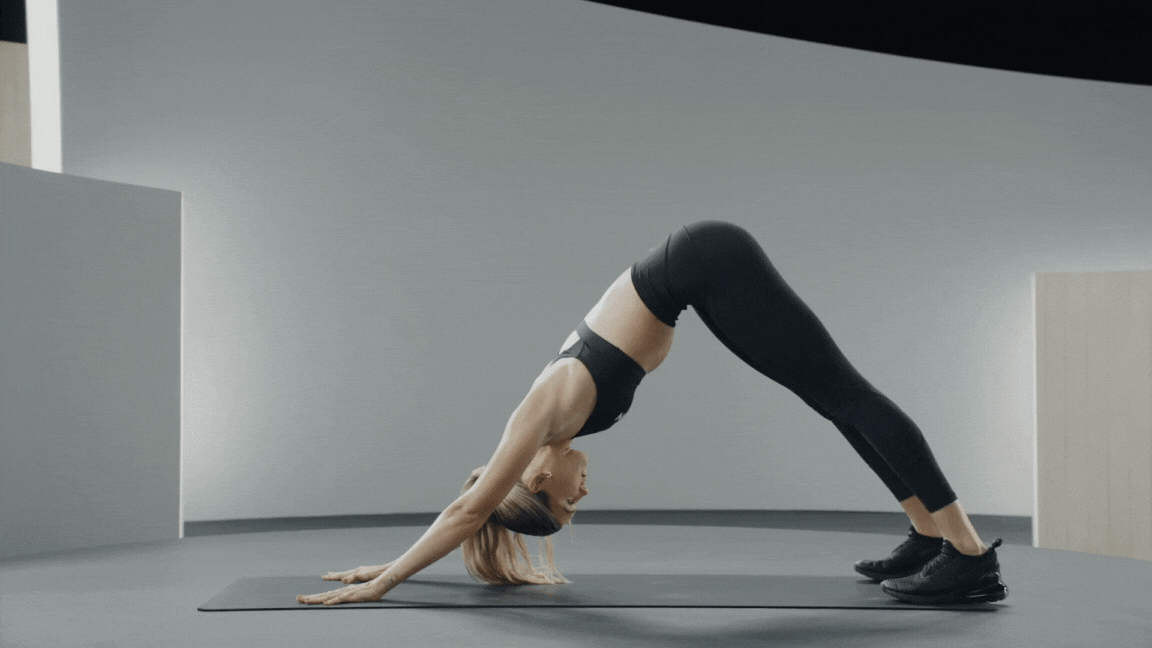
4. Plank to Downward-Facing Dog
Plank to Downward-Facing Dog (Adho Mukha Svanasana) strengthens your shoulders, core, and arms while also improving flexibility and control, Ben says. When you perform this move in an articulating fashion (as shown above), it doubles as a spinal mobility exercise.
Start in a high plank position with your palms on the floor underneath your shoulders, body forming a straight line from head to heels.
Inhale to lift your hips up and back to find Downward-Facing Dog, so your body forms an inverted “V” position. Try to maintain a solid line of energy from your wrists to the crease of your hips.
Hold for one second, then slowly shift your chest forward and lower your hips to return to plank.
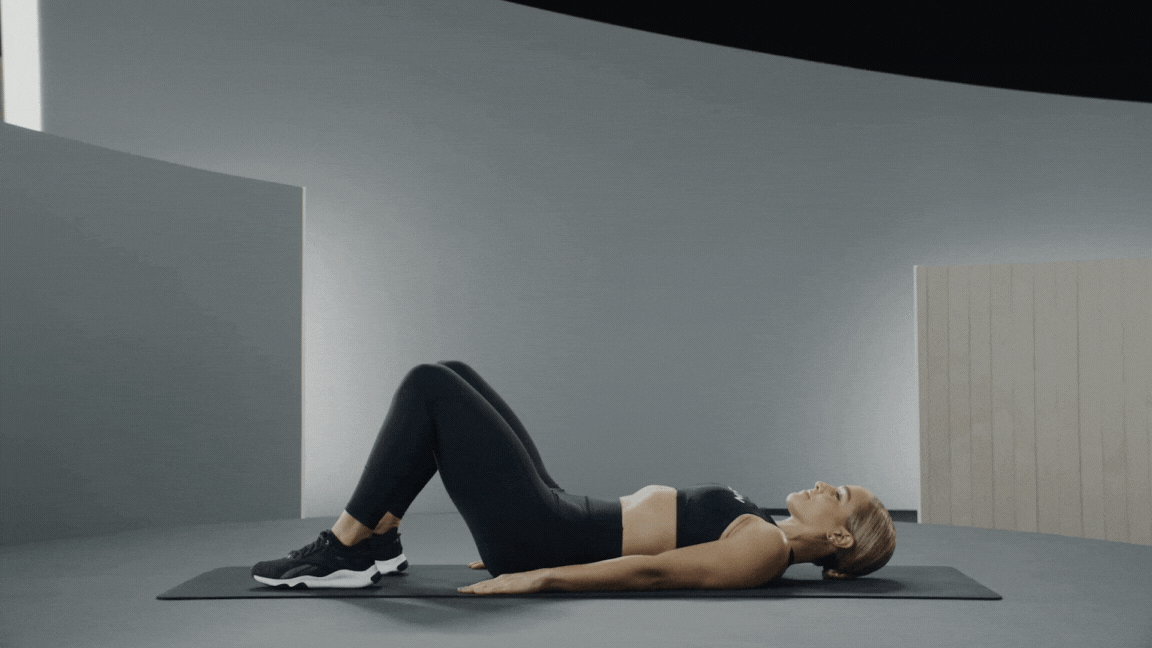
5. Bridge
You’ll see versions of the bridge exercise in yoga, Pilates, barre, and classic bodyweight strength training. It’s widely used because it’s fantastic for targeting your glutes, hamstrings, and lower back, “helping to build a strong and stable foundation,” Ben says. To take it up a notch, you can perform bridges with one leg at a time.
Lie face-up on the floor with your arms by your sides. Bend your knees and place your feet flat on the ground about hip-width distance apart and just past your fingertips. Lift your toes off the floor so your weight is in your heels.
Engage your core and squeeze your glutes to lift your hips up into a straight diagonal line from your shoulders to your knees. Try to maintain a neutral back while you move, focusing on hinging at the hips.
Hold at the top of the bridge for one second, then slowly lower your hips to return to start.

6. Squat
Squats are one of the best functional bodyweight moves out there, strengthening your legs, glutes, and core. If simple bodyweight squats are easy, there are countless ways you can spice them up with squat variations.
Start standing with your feet shoulder-width apart and your toes slightly pointed out.
Engage your core, and inhale as you sit your hips back and bend your knees as if you were going to sit on a chair. Think about keeping your back straight and your chest up as you lower.
Pause when your thighs are parallel to the ground, or as low as you can comfortably go.
Exhale and push through your heels to straighten your legs and return to standing.

7. Lunge
Lunges build strength for real-life situations like climbing stairs or stepping up onto a bench or stool. You can lunge in virtually any direction, but front lunges are perhaps the most classic version of the move.
Start standing with your feet about hip-width distance apart, hands on your hips or clasped in front of your chest.
Engage your core (imagine gently pulling your belly toward your spine), and take a big step forward with your right foot, keeping your feet hip-width distance apart. Bend your knees to lower your body until both legs form 90-degree angles and your front thigh is about parallel to the floor. Keep your torso upright (try not to lean forward).
Pause here for one second, then push off your front foot to step it back next to your left and return to the starting position.
The Takeaway
According to Ben, strength training without weights is all about creativity and making the most of what you have: your body. “In my own workouts and class programming, I focus on bodyweight exercises, which can be just as challenging and effective as lifting weights when done with proper form and intensity,” he says.
At the end of the day, “what matters most is finding what works for your body, your lifestyle, and your training goals,” Ben says. “Whether you’re lifting a dumbbell, your bodyweight, or a resistance band, what matters most is consistency, intention, and showing up for yourself.”
Strength-based exercises that use your bodyweight as well as modalities like yoga, barre, and Pilates are great options that can be scaled to any fitness level and done in your own home. If you have equipment like resistance bands, sliders, a suspension trainer, or even simple tools like a bench, chair, step, or railing, the possibilities only expand from there.
Related Articles
This content is for informational and educational purposes only and does not constitute individualized advice. It is not intended to replace professional medical evaluation, diagnosis, or treatment. Seek the advice of your physician for questions you may have regarding your health or a medical condition. If you are having a medical emergency, call your physician or 911 immediately.
Build full-body strength
Enter your email to get articles, instructor tips, and updates from Peloton sent to your inbox.
By providing your email address, you agree to receive marketing communications from Peloton.
For more about how we use your information, see our Privacy Policy.

